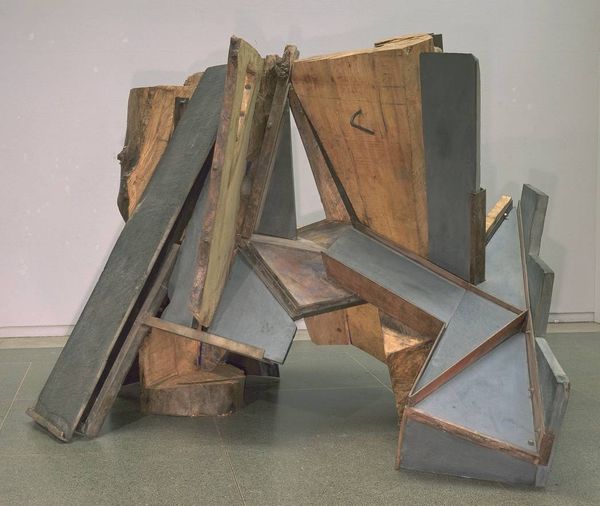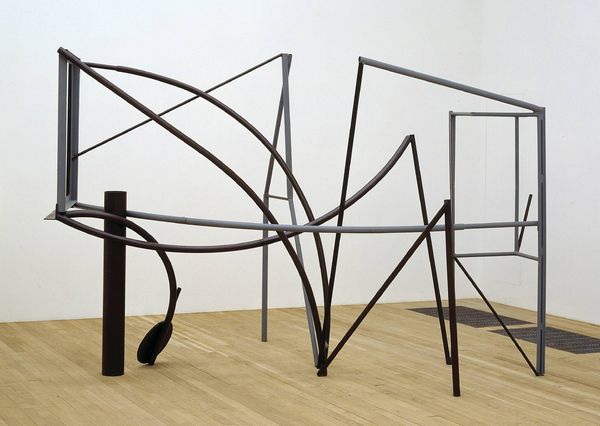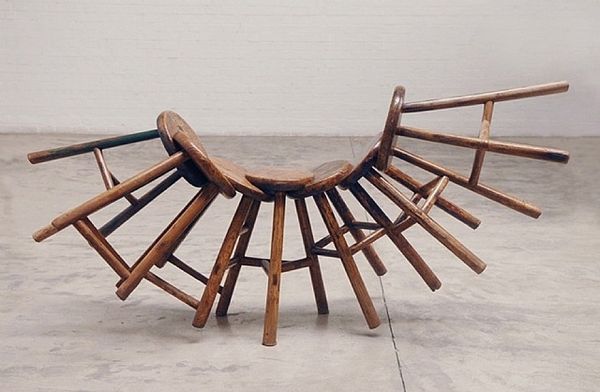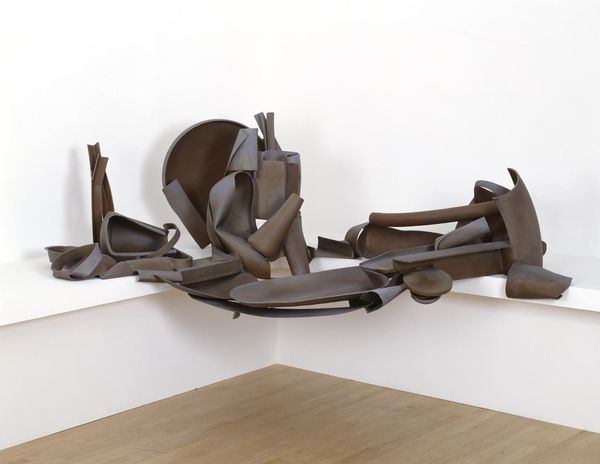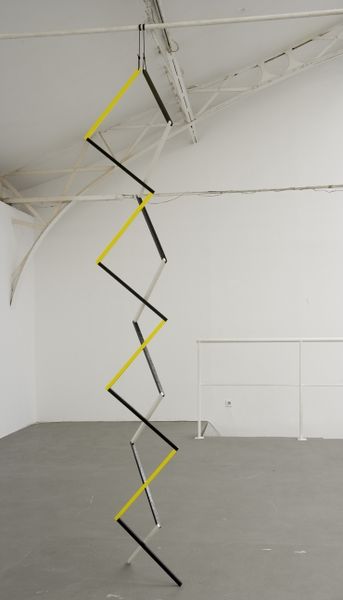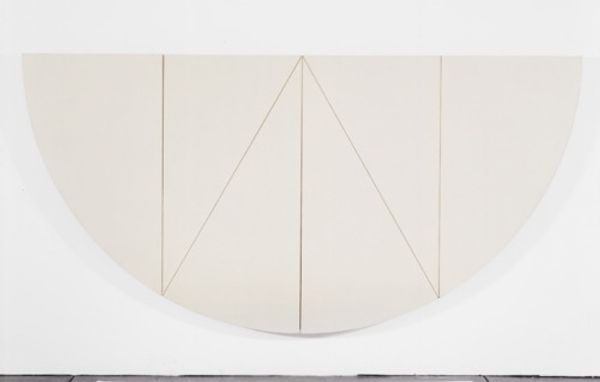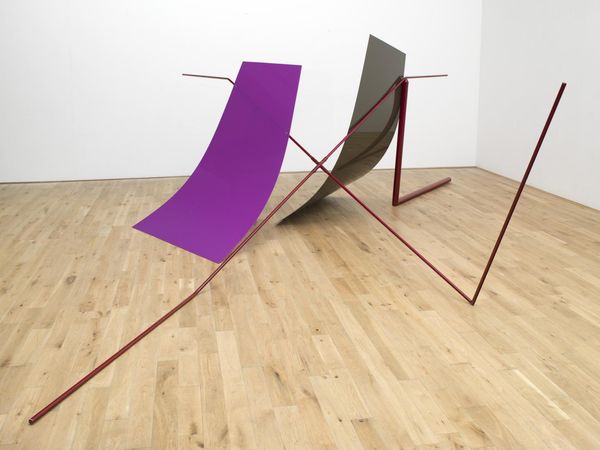
#
tribal design
#
natural stone pattern
#
rippled sketch texture
#
natural shape and form
#
organic shape
#
textured
#
furniture
#
art deco organic shape
#
layered pattern
#
organic texture
#
orthographic sketch
Copyright: Charles Garabedian,Fair Use
Curator: Standing before us is Charles Garabedian’s "Untitled" sculpture from 1967, an intriguing piece that blends the rawness of organic forms with a definite structural sensibility. Editor: Woah, it’s like… a deconstructed throne designed by someone who’s only seen furniture in a dream. Kind of awkward but captivating. I like the textural contrasts, though, something vaguely tribal or at least earthy. Curator: The artwork's texture is, indeed, very important, acting as a canvas for an intersection of visual vocabularies. We might read those layered patterns as reflections on natural stone patterns, with that almost tribal design invoking conversations about the layering of cultural motifs. Editor: You know, looking at it, I see those rigid lines trying to contain something wilder, maybe a conversation between control and chaos? It feels very "sixties," doesn't it? All that searching for something new but still clinging to familiar shapes. I feel like if it were alive, it'd give off a kind of gentle melancholy. Curator: That sense of seeking resonates. I feel the work hints at dialogues prevalent during its creation regarding gender, race, and the burgeoning counter-culture—questions about who sits on what throne, literally and metaphorically, become quite pressing in those historical moments. Garabedian, known for navigating complex narrative terrains in his work, implicitly asks viewers to deconstruct our notions of order and structure. Editor: Totally! And you can’t ignore the raw materiality. The texture feels really immediate. As if it was trying to come back to our first notions of sculpture and how space could feel or even work when rearranged with some art in mind. Curator: Precisely. Garabedian compels us to question those first notions while inviting contemplation of complex issues regarding structural power. Ultimately, "Untitled" becomes a dialogue starter, not only aesthetically but regarding how our historical past always remains imprinted on our current and future designs. Editor: I get that. It's a rumination on how art itself can function. This piece isn't just sitting pretty; it makes you work, to feel things—even the uncomfortable stuff.
Comments
No comments
Be the first to comment and join the conversation on the ultimate creative platform.
